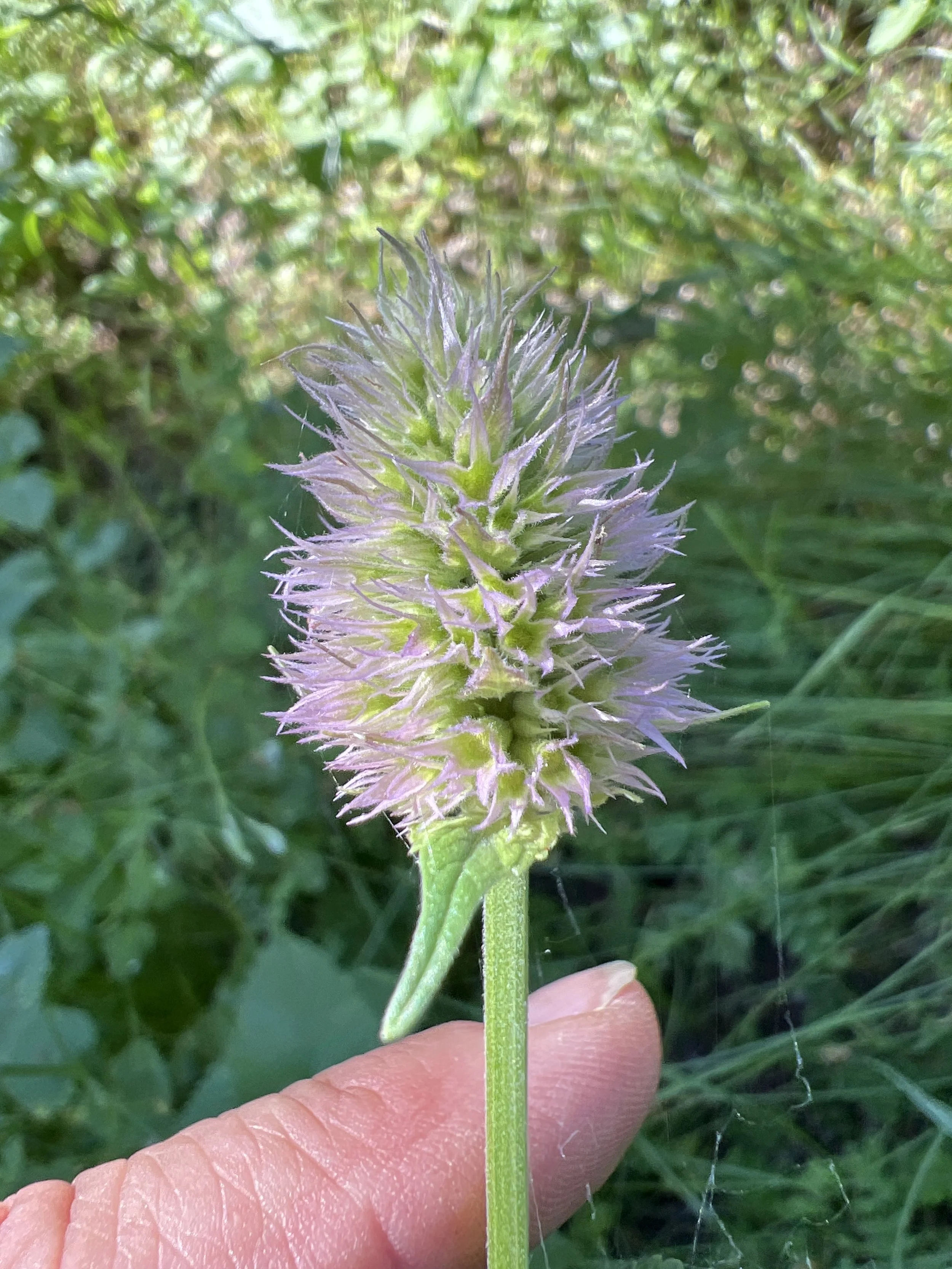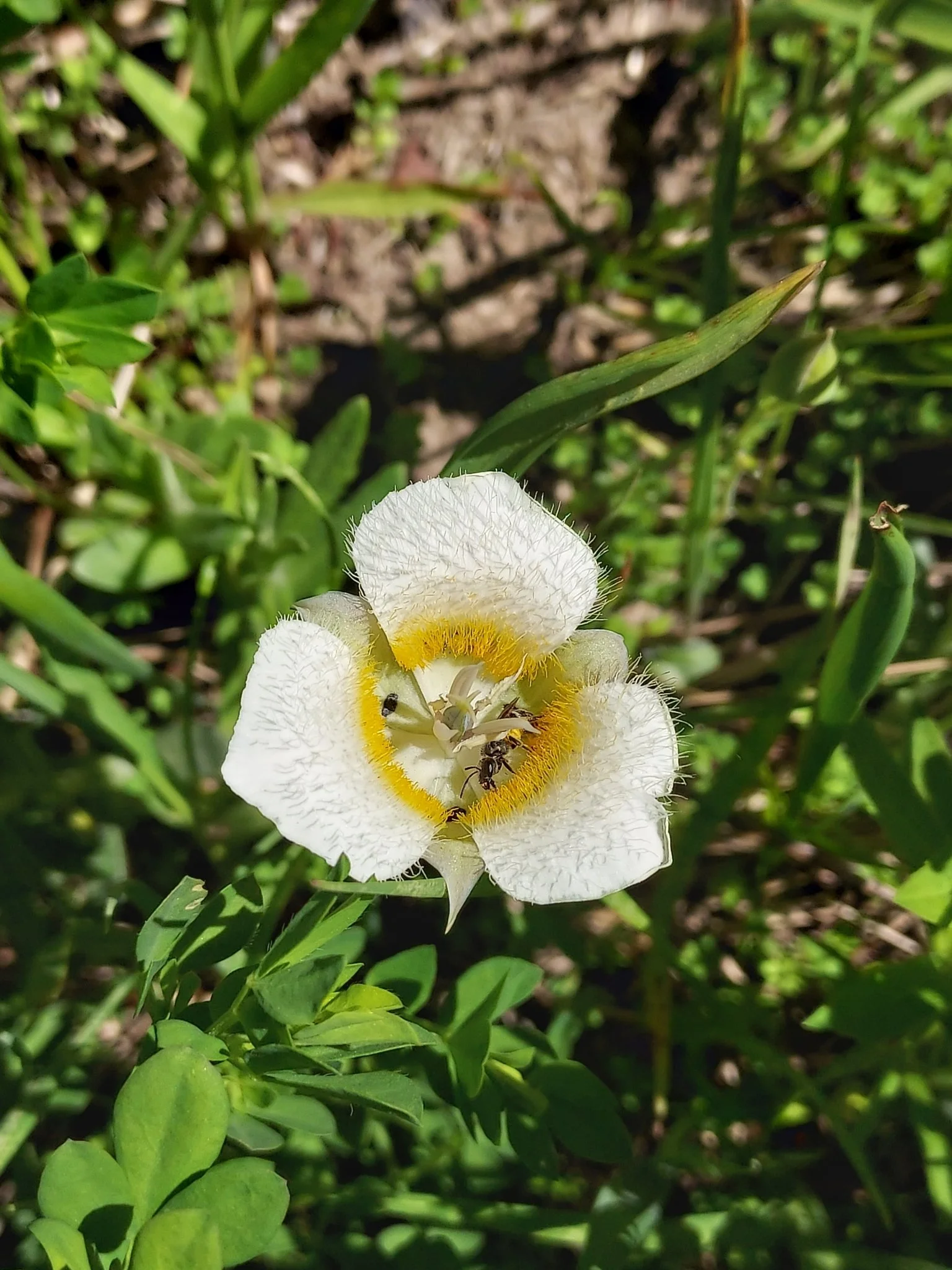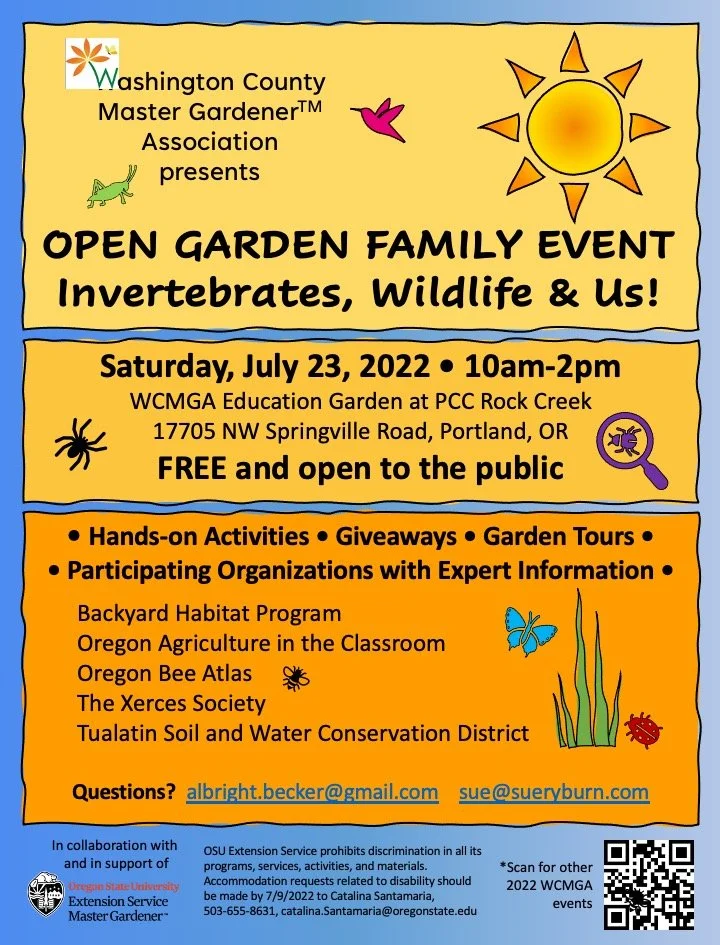Wait a minute! How’d it get to be halfway through the summer? Don’t worry; there’s still plenty of bees out there and plenty of farmer’s markets (and don’t forget the State Fair!) at which you can share your native bee knowledge and love. Check the Calendar of Events below, as well as checking your in-box for outreach event possibilities sent from Jen Larsen.
If you have any feedback or submission for Field Notes or if you want to post notes for your regional team contact Ellen Silva (e.silva@comcast.net). Please try and get your submissions in the Monday before publication.
In this issue
Field Notes
Mt. Hood Meadows - an hour from Portland, and a completely different world
The training event at Mt. Hood Meadows, led by Michael O’Loughlin and Dan O’Loughlin, was a delight. Excellent instruction, profuse flowers, and special bees. Dufourea calichortii and Halictus vergitillus are found foraging on the numerous Mariposa lilies at this site. Someday your editor hopes to be able to tell H. virgatellus and H. confusus apart without relying on where they were collected!
Photos: Ellen Silva, Rachel Phariss and Julie Graber. Can you spot the wedding photo shoot?


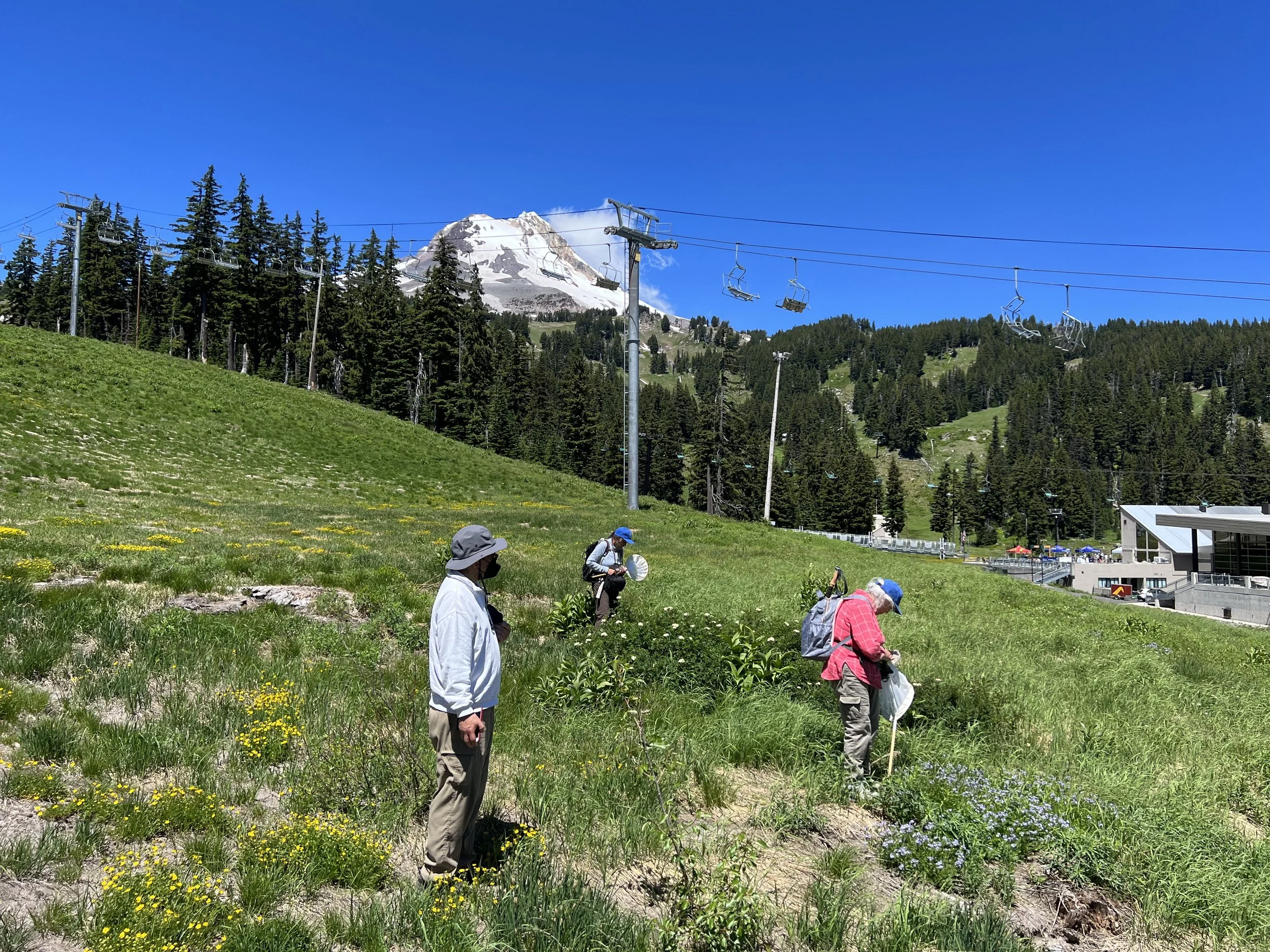
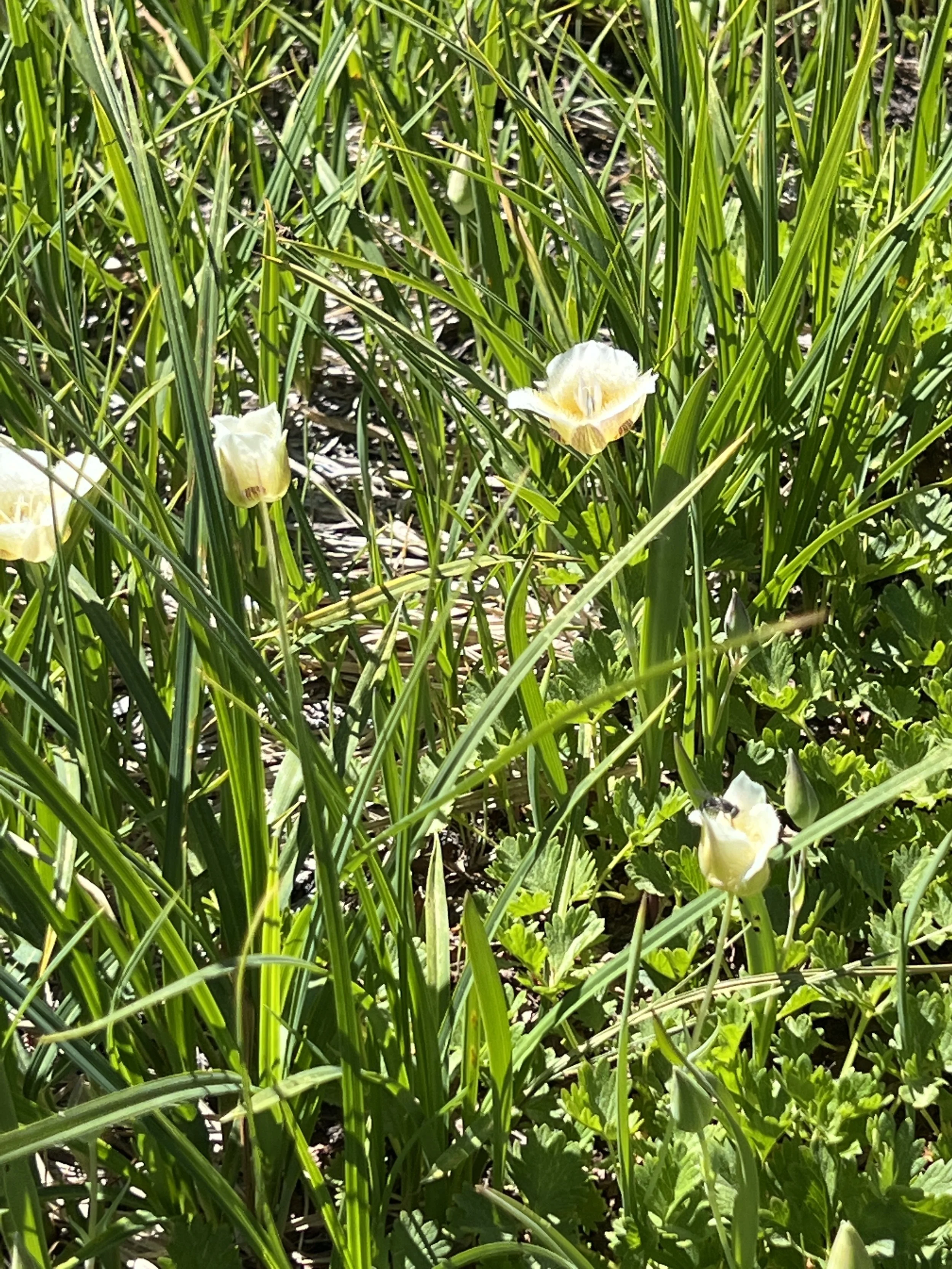
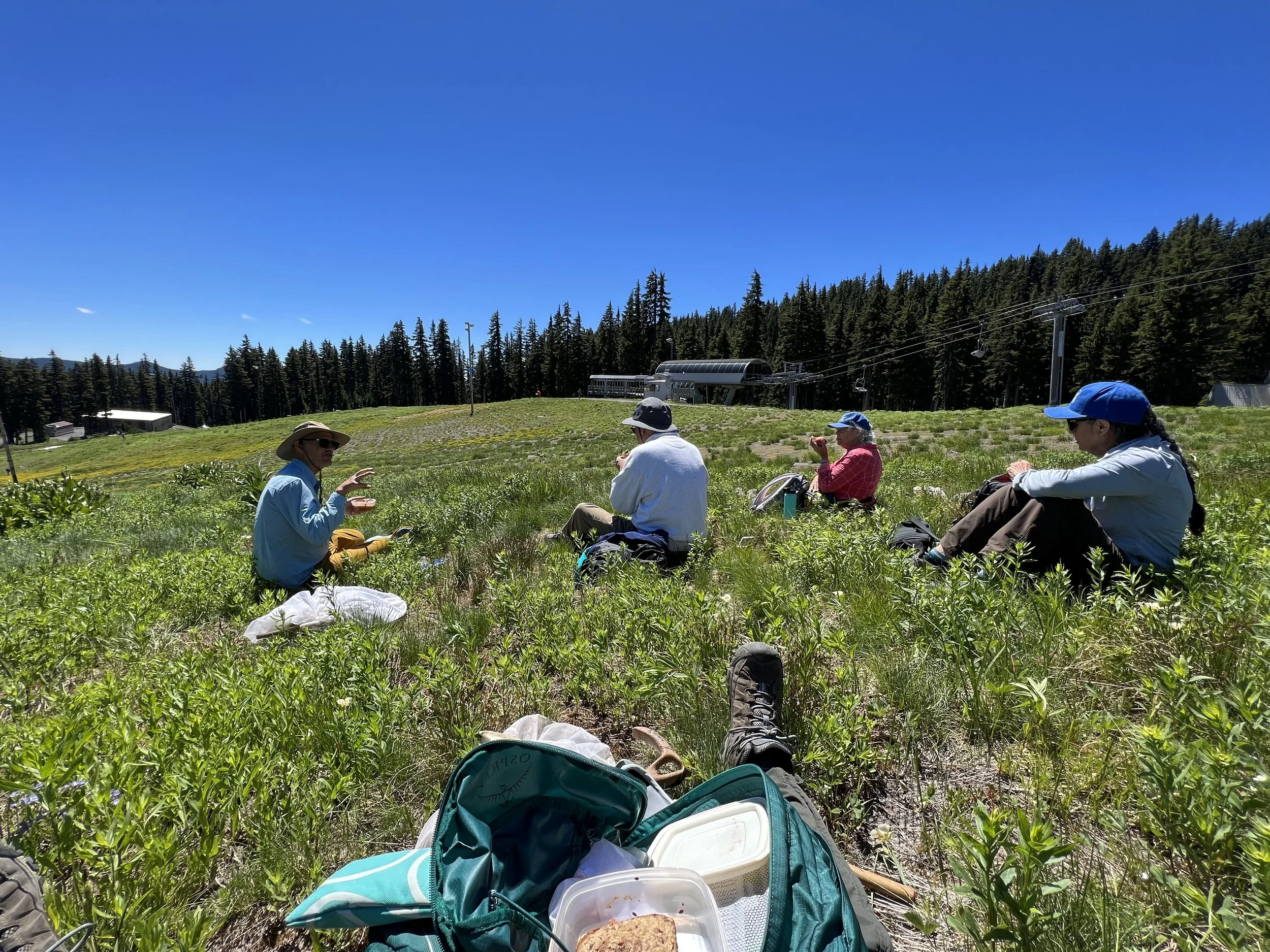
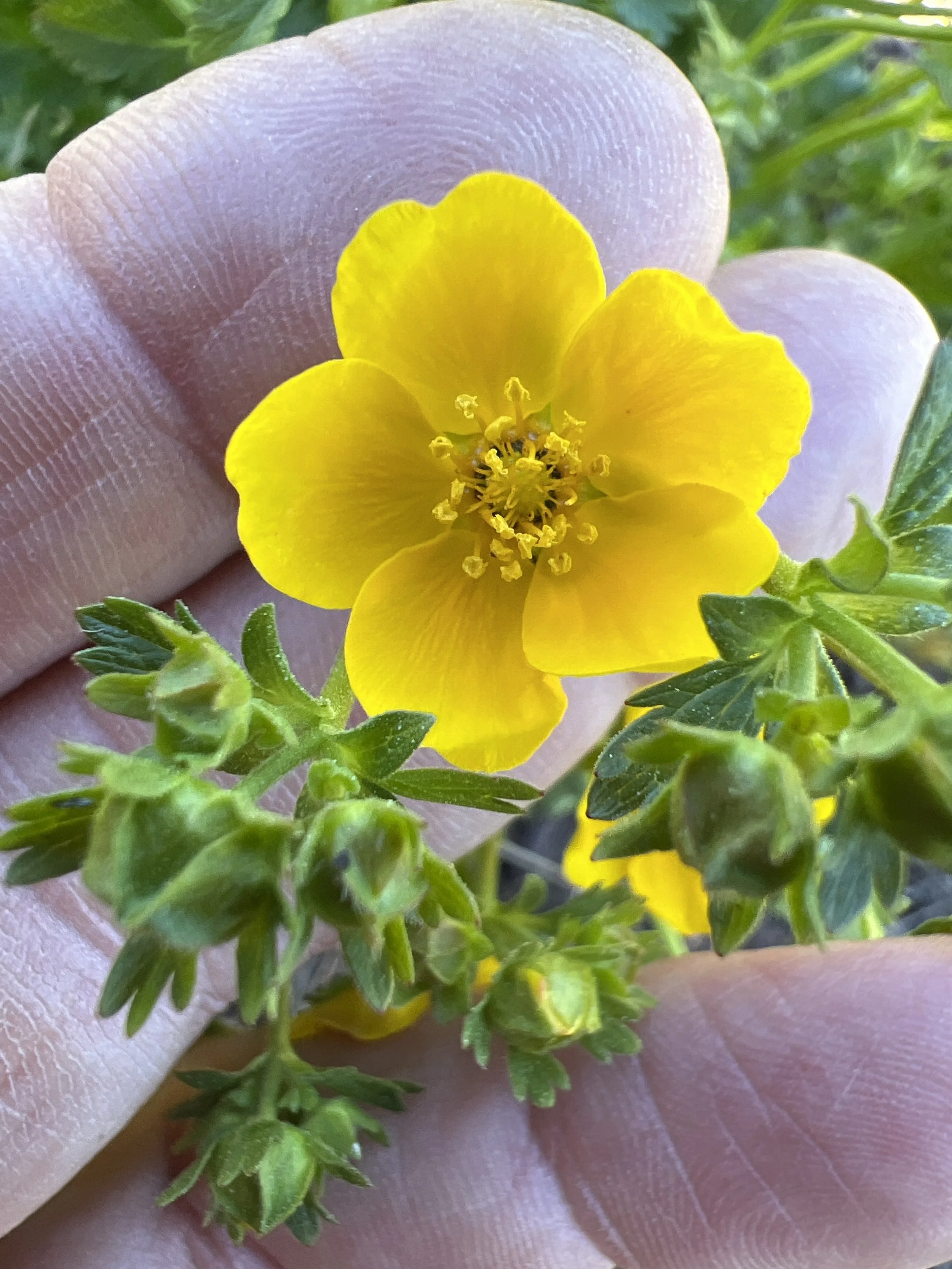
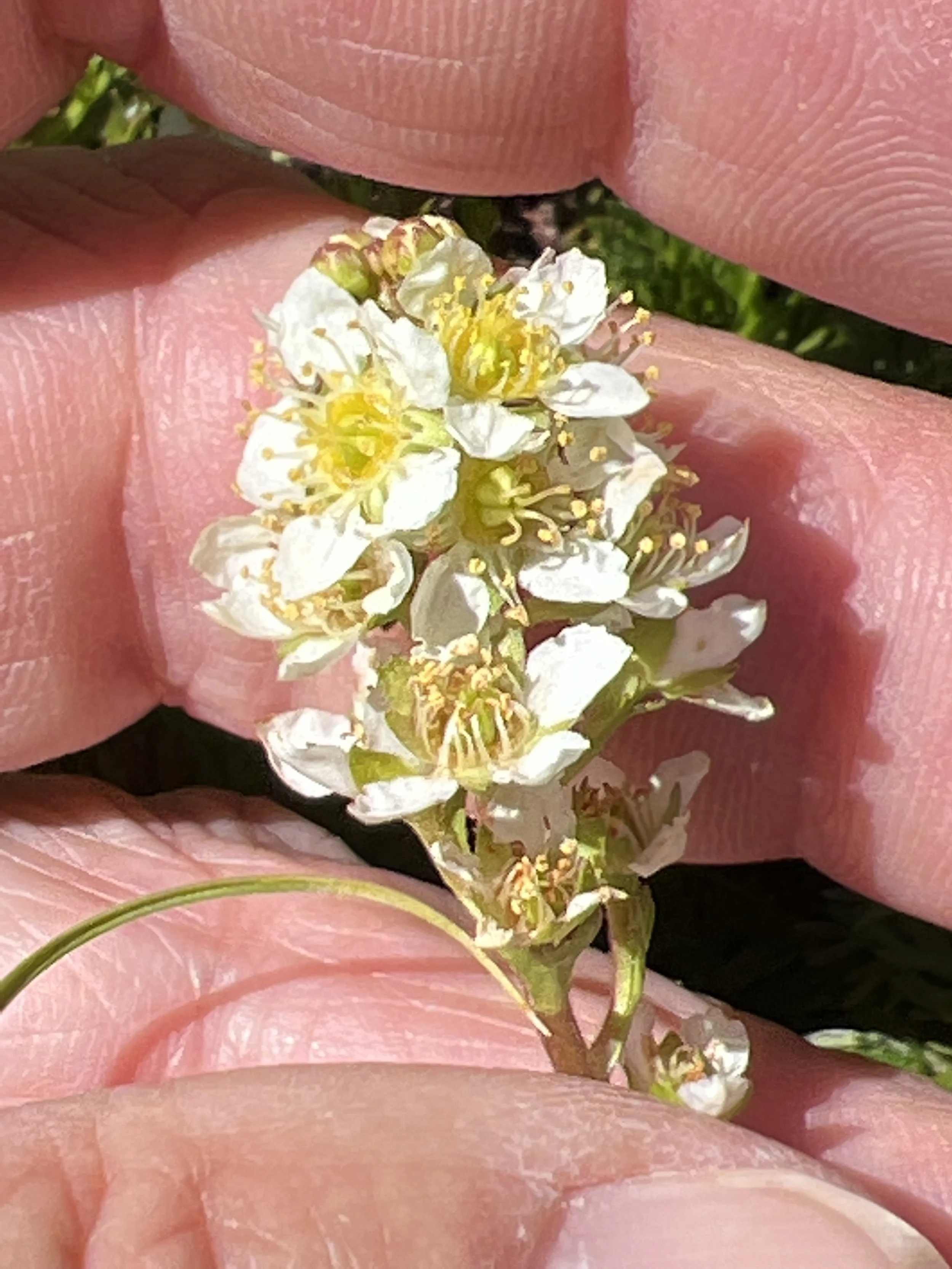
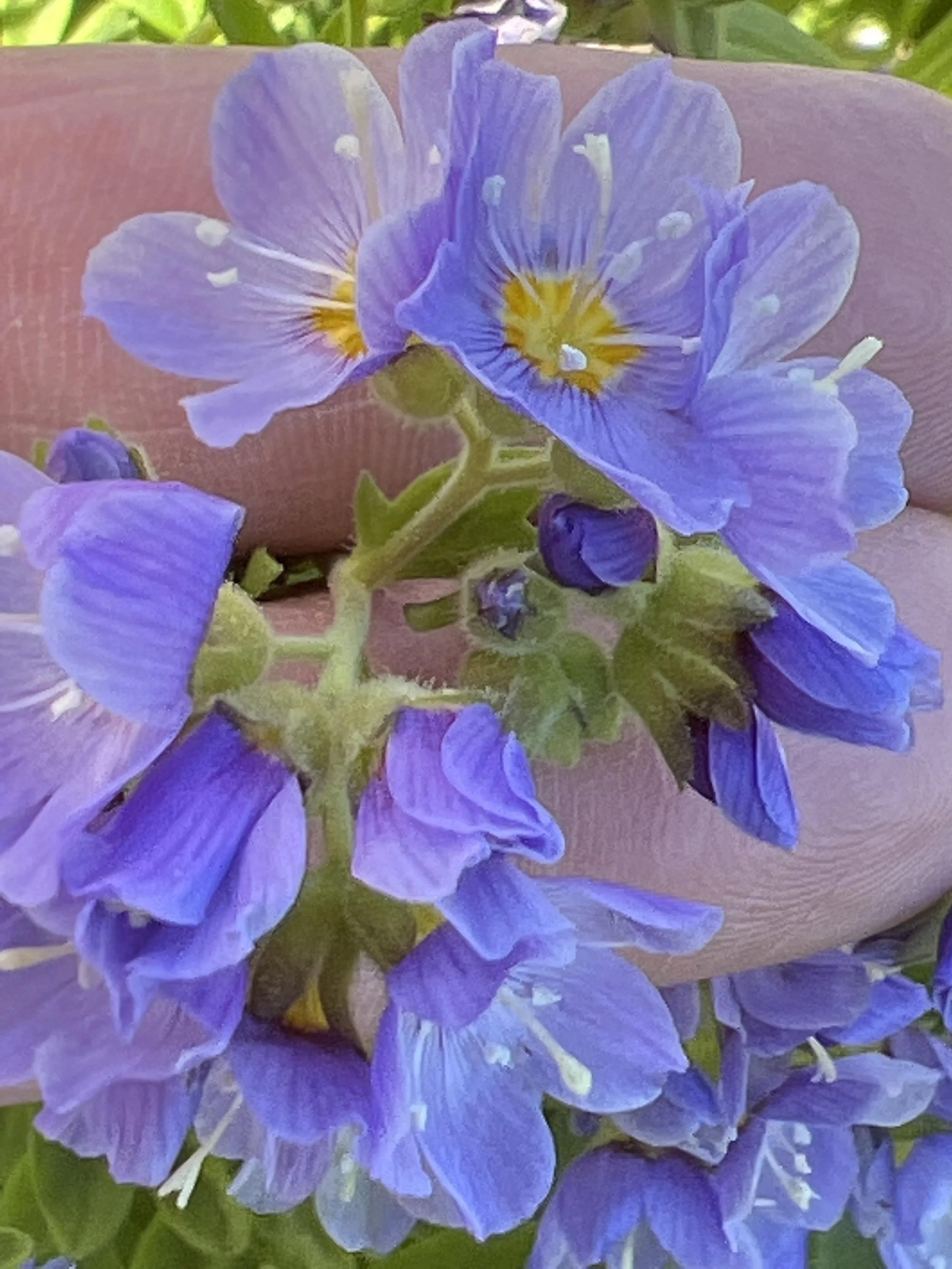



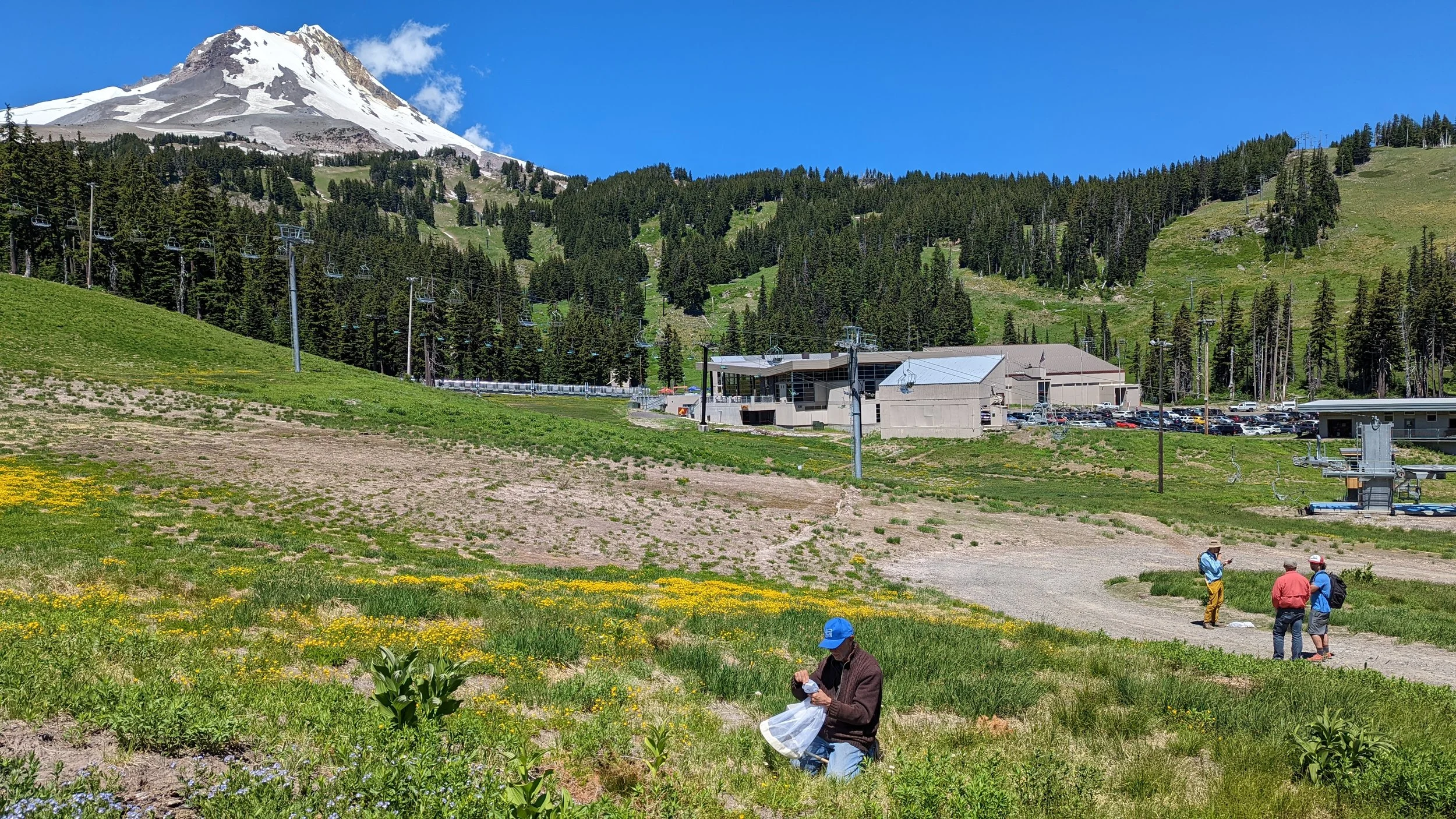

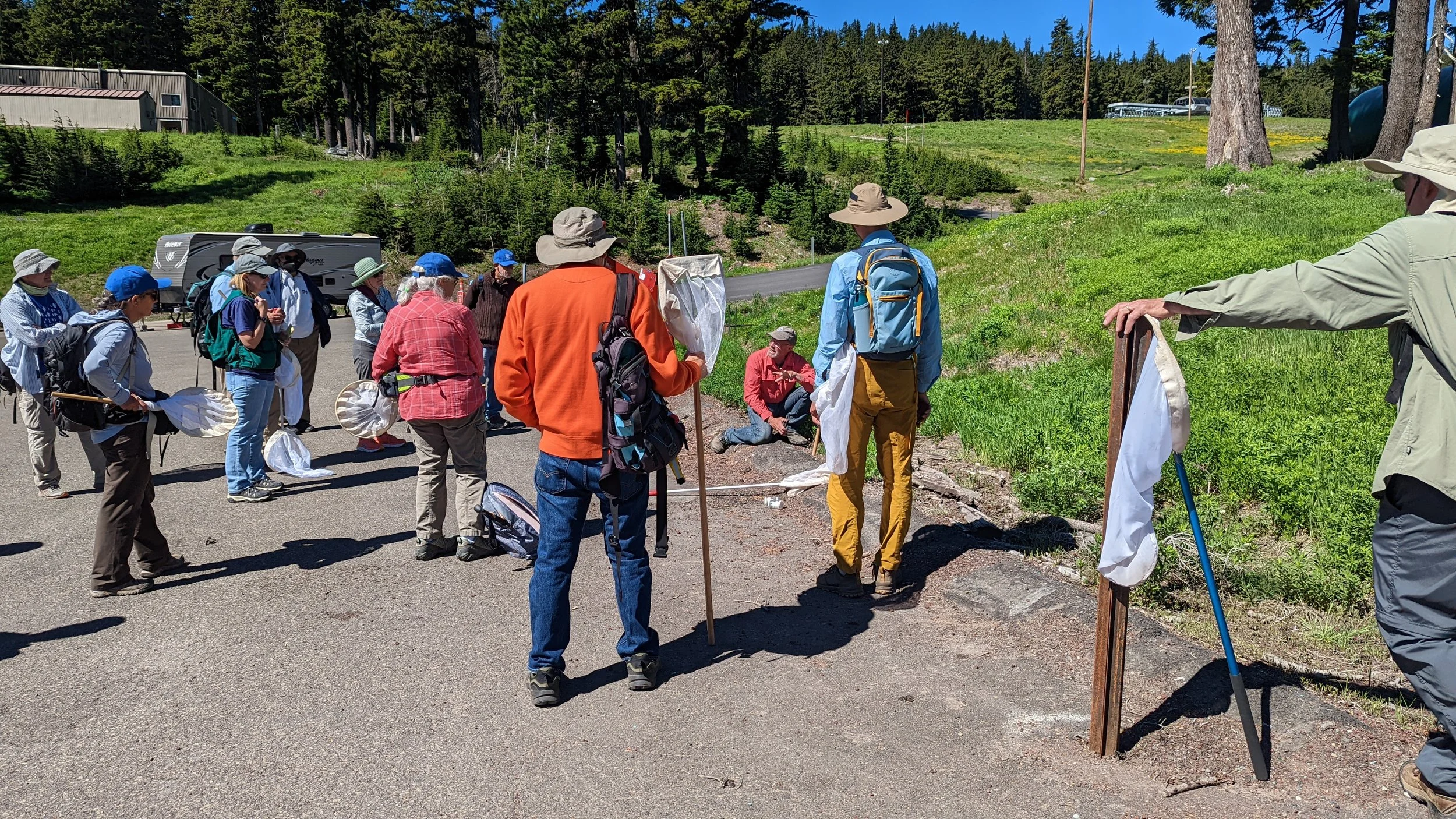
The view from Table Rock, a Nature Conservancy Preserve where we have permission to collect. Check the permits page on Canvas for information on how to gain access. This site has a locked gate - you will need to get in touch with Mark Gorman before going (contact info on Canvas in permit).
When the search for Franklin’s turns into a master class in native bees and the ecology of the Siskiyou Mountains…
Nearly 100 people — representing governmental agencies, environmental NGO’s, academia, the OBA, and even the general public — showed up for the 2022 search for Bombus franklini. Spoiler alert - Franklin’s bee was not found. But new friends and lots of other bees were, along with incredible scenery and great exercise.
The organization of the event was quite simple. Everyone interested gathers in a parking area above the Mt. Ashland ski area where we were oriented to the day. We then drove to the meadow where Franklin’s bumblebee was last collected in 2006 by Robinn Thorpe. After sanitizing our nets, groups dispersed widely across the mountain. Any bumblebees collected were placed in empty (non-lethal!) vials to observe and then release. Anything looking like a Franklin’s was taken to an expert (Linc being the primary guy!) for positive ID.
Unfortunately, Linc didn’t get to ID any Franklin’s. But he was delighted when OBA’s own Jess Tyler, also of the Center for Biodiversity, captured a Bombus occidentalis. This species has become quite uncommon; it’s great to know that it is hanging on. Jess’s work has specifically supported the survival of this species. It’s quite appropriate that he was the one who found it.
Before and after the hunt, a few of us connected with Linc for some free-form collecting. He led us to some of his favorite spots on Monday. I can still feel the heat coming up through the rock at the top of Table Mountain (they don’t call the flowers that thrive there hot rock penstemons for nothin’!). Cool bees, cool views, and so much information.
Linc continued this master class on Wednesday at an OBA training event at Grizzly Peak Trailhead. I know it is getting boring to read about, but gee, whiz, more gorgeous views, more beautiful flowers, and more natural history knowledge. Thanks, Linc, for sharing your time and talents (and the battery charger and diagnostics!).
The tour of Linc’s favorite sites included a visit to Vesper Meadow, an effort on the part of The Understory Initiative to facilitate restoration and conservation of native species. VM Director Jeanine Moy gave us a tour of their newly acquired tract. They are anxious for OBA members to visit and help them list the bees that are visiting their properties. Contact Jeanine at jeanine@vespermeadow.org to arrange a visit.
OBA announcements
Where are the Squash Bees Now?
Participate in a unique opportunity to track a native bee expand its territory! Do this by checking out any patch of squash available to you for the presence of Eucera (Peponapis) pruinosa, that cute little honeybee look-alike responsible for so many pumpkin pies come November. First found in southern Oregon in 2018 by an OBA member, E. pruinosa has been heading north. How fast and how far will it go? We can help answer that question. Check out all the details by clicking HERE.
State Fair Outreach Opportunity - Answer the burning question of whether native bees and pronto pups go together!
The Oregon State Beekeepers Association will have a booth at the Oregon State Fair this year. It would be great if some Master Melittologist participants wanted to volunteers in some time slots, and educate the public about native bees! See below for info and schedule.
Anyone that has the link can edit the spreadsheet (fill in their own names/contact info).
Everyone that is on the schedule will receive a letter from Bonnie King explaining the details in advance of the fair. They get fair passes and free parking, and water bottles are provided.
Contact Bonnie King, OSBA Chair (Fairs and Exhibits), at bonjking@gmail.com or 503-864-2100 with questions.
Click HERE for SCHEDULE LINK
Bee School - there are still spots in the Advanced Week…
…but it is filling up fast! Check the email Jen sent June 29 for registration.
Surveying for Franklin’s Bumble Bee
The search for Franklin’s bumble bee continues. This year the event, coordinated by USFW, will be held July 11 – 15 on Mt. Ashland. In addition to surveying for Franklin’s bumble bee and Western bumble bees, lots of networking with PNW bee organizations and experts will take place. Check the email from Jen Larsen (4/20/2022) for further details on how to join in.
Calendar
Great stuff coming up - haven’t you always wanted to go camping at Steens Mountain? Find out more by clicking the links in the calendar below, and check out event flyers on Canvas.
Which reminds me, if you are planning a collection outing and are open to company, please post it to Canvas to let others know.
Team news
If you want to include your own team’s news in the Roundup, send it to Ellen Silva (e.silva@comcast.net) the Monday before we publish (typically, the 1st and 3d Monday of the month).
PDX
Your team organizers are gathering info behind the scenes on how/when we can set up some microscope days this fall. Oh, and how to get together to have some fun, too. (Not that microscope days aren’t a blast, of course.) Watch this space for more info!
IDAHO
The Native Bee Survey of Treasure Valley (Idaho) — a USDA Specialty Crop Block Grant-funded partnership between the College of Idaho, Oregon State University and entomologists Dr. Ron Bitner and Amy Dolan —grew out of informal surveys at Bitner Vineyards. Today, the survey has a mission to identify the native bees pollinating crops in the valley and to share information about them with the public. The Oregon Bee Atlas plays a training role for new bee biologists supporting the survey through our Master Melittologist program; it’s always nice to be associated with good work, eh?
Read more about this survey by clicking HERE.
Alpine Mariposa Lily (with bonus Halictus virgatellus?) - Joe Engler
What’s blooming
Combing through iNaturalist over the last week, we note our volunteers have come across some great plants on the hit list or have found bees in areas of special interest. You should be able to revisit these sites. Remember to check the permit requirements for these sites in Canvas.
Oregon Checkermallow (Sidalcea oregana)- Noelle Landauer - Sisters (July 17)
Musk Monkeyflower (Erythranthe moschata) - (Cryptantha intermedia) - Katherina Davitt - Keno (July 17)
Alpine Mariposa Lily (Calochortus subalpinus) - Joe Engler - Mt. Hood Meadows (July 16)
Please remember to include images of the flower, the leaves, and the entire plant with all your submissions. Only include images of the plants you collect on, not bees.
miscellany (not to be missed)
Catch a Buzz Summary (Martha Richards)
Squash flowers are blooming, which means that it's time to get up early, peek into closed squash blooms, and find out if Peponapis pruinosa has made it to your area. The squash bee survey has been tracking the migration of this bee, and so far they've been found in the Rogue Valley, up the coast as far as Newport, and in the Eugene area. Have they made it to the Klamath Basin? Bend? Further north in the Willamette Valley? Elsewhere? Squash bees feed on all kinds of squash and are often found sleeping in the closed blooms in early morning. They're native to the Southwest but they've been expanding their range as the climate changes. The first Oregon sighting was in 2016. See the above announcement for details on how to participate in the survey.
Remember to check the calendar in Canvas for new postings and last-minute collection opportunities. The Cottonwood Canyon campout is scheduled for September 3-4.
The time to reserve your spot in Bee School is NOW. The intermediate course is full, but the advanced course has some space (as of July 6th).
There are lots of outreach opportunities, including the Oregon State Fair August 26-September 5th. Consider setting aside a day (or afternoon, or however much time you can spare) to staff the booth and talk about bees.
Linc is moving quickly through his bee IDs, in part because of DNA barcoding. So far, he and his students have prepared and submitted samples from 570 bees and have received 380 results. They've got another 270 samples ready to be submitted (probably more by now). Joe Engler has been working through the results for 190 Lasioglossum bees, sorting out what they are and how to identify them visually. So far, with the DNA assist, Joe and Linc have identified approximately 75 Lasioglossum species. The DNA of some of the samples was degraded enough that it couldn't be coded; the good news is that the degraded DNA occurred mostly with bees caught in pan traps, where they had been sitting in the soapy water for an unknown amount of time. Bees that had been hand-netted had good DNA so apparently our collection methods are good. How much does it cost to analyze the DNA on a bee? Somewhere around $40-50 per bee. Roughly half of this cost is in the preparation – they photograph the bee, clip a middle leg, keep meticulous records of whose leg is in each vial, then package it all up and send it off – and the other half is the cost of the analysis itself. But that's only the beginning, because there's still the work of analyzing the results.
The next Catch a Buzz is August 3 at 7pm. To join, go to https://oregonstate.zoom.us/j/97230252365?pwd=TURyTXNMZ1M5SHl2TFQvajBxemtRdz09 | Password: bees
Taking a Bee Walk When There Aren’t Any Bees - A How-To from Gretchen Pederson
On a discovery trip to the Sunriver Nature Center two days before the show to see what bees were out and what flowers were in bloom, we discovered very few flowers and only one bee. The walks on the day of the event were going to be a challenge! An off-the-cuff flower walk with few flowers is a bit daunting, but as it turned out, we were both able to find and catch several bees, and that opened the door to many topics. But we came prepared, just in case.
We put together a number of 8.5” x 11” laminated sheets from Bee Basics: An Introduction to Our Native Bees and numerous other sources to have some visual aids. The material from Bee Basics really helped in describing bee anatomy by enlarging a bee sketch into 2 taped-together sheets. Bee nest paintings and composite images of floral parts were also helpful. A handout of how to plan a flower garden was much easier to explain while walking through a garden even if it is not filled with blossoms.
So take it from Gretchen, always bee prepared!
Making us proud, as usual…
Our own fearless leader Andony Melathopoulos was interviewed on OPB Radio’s Think Out Loud program today and talked about the Oregon Bee Project Strategic Plan and the Oregon Bee Atlas. What great exposure for our program!
Click HERE to listen to the interview!
